Menu
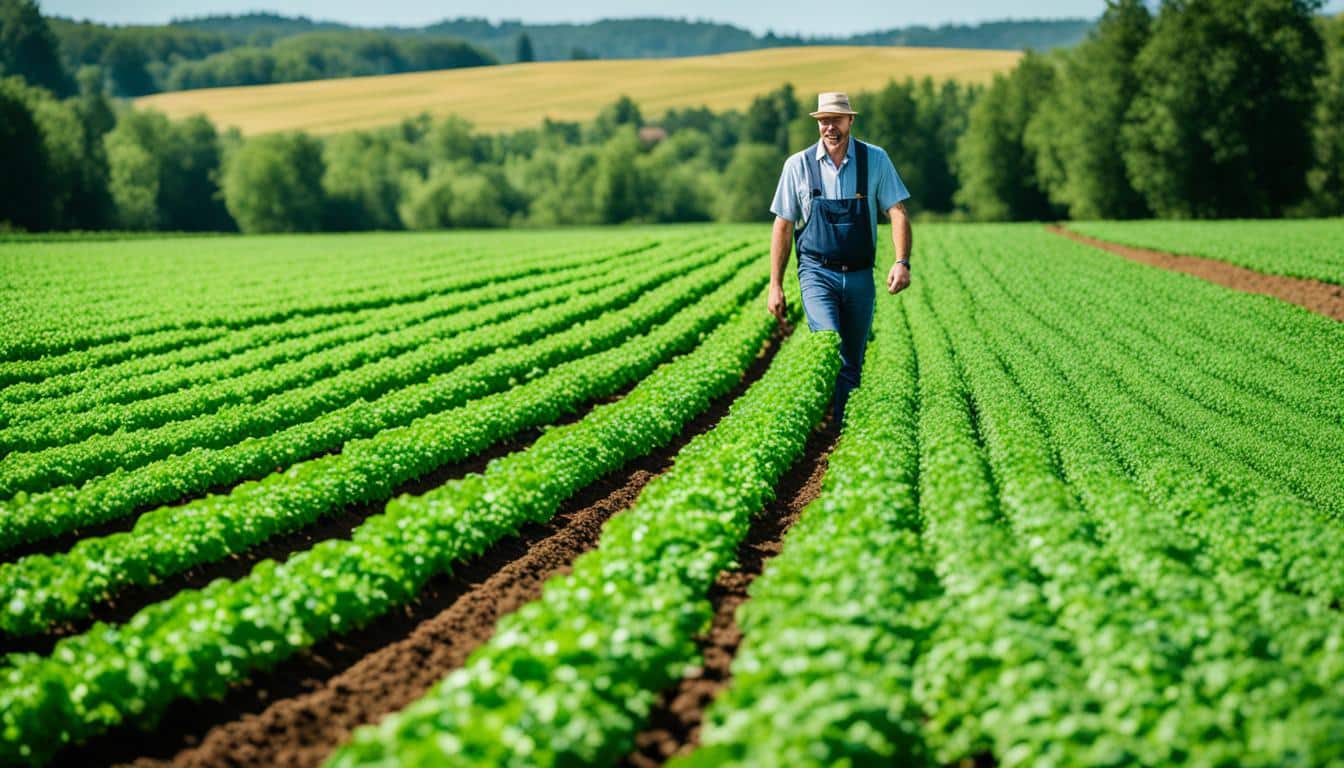
Did you know Soil Health Management Systems (SHMS) increased farm income by $65 per acre, over 29 farms? This shows effective soil health management is key for farmers to be more productive and make more money.
Soil health is crucial for landscaping and farming that are sustainable. It affects plant growth and the overall health of the ecosystem. By using smart irrigation, testing soil often, and adding natural materials, farms can be more productive. This helps the environment too. Companies such as Watermasters in Lubbock, TX, show how to use water well and take good care of the soil. These actions lead to beautiful landscapes and farms that produce a lot.
Good soil is vital for farming that lasts. It helps stop soil from washing away, keeps nutrients moving, and makes the land strong. Looking after the soil helps farms stay productive for a long time. This care means the land is used in a way that keeps it healthy, which is key for farming that doesn’t harm the environment.
Strong and healthy soil is the foundation of agriculture that keeps going. It makes the soil rich and stops it from being blown or washed away. For example, using cover crops can make the soil better. They also help fight weeds and manage water and nutrients.
The National Cover Crop Survey found that well-managed soil can lock away carbon. This cuts down on the gases that warm the Earth. It’s amazing that soil has more carbon than the air. So, looking after soil well is crucial for the planet.
Keeping the soil healthy has a lot of perks. It helps crops grow lots and be high quality, which is great for farms in the long run. Things like not ploughing, growing trees with grazing animals, and mixing different plants together add good stuff to the soil. This makes the soil more fertile.
In Colorado, a special project with 50 farmers has been running for 10 years. It looks at how to farm in a way that keeps the soil and land rich. This kind of work is showing that focusing on soil health helps in farming that’s good for the future.
| Key Statistic | Impact |
|---|---|
| Cover crops build soil health | Improve water and nutrient management, curb erosion. |
| 61 area farmers from SARE projects | Improved knowledge and skills related to soil testing. |
| 50 area farmers in Colorado | Part of a 10-year soil health project focused on sustainable agriculture. |
| Soils contain three times the amount of carbon compared to the Earth’s atmosphere | Critical for carbon storage and reducing greenhouse gas emissions. |
| More than 50% of agricultural soils are moderately to highly degraded | Significant issue impacting soil fertility and agricultural sustainability. |
But, bad farming can really hurt the soil. The UN warns that, in about 60 years, we could lose a lot of our soil if we’re not careful. So, it’s super important to look after the soil well now. This way, we can make sure there’s enough food, fight climate change, and keep farming possible all around the world.
Testing soil regularly is key to keeping it healthy. This is done by checking the soil during growing seasons. It helps farmers know the best ways to feed their crops and keep salt levels right.
By looking at things like pH, nutrients, and organic matter, farmers learn what their soil needs. This helps them make smart choices about how to feed their plants. It’s important to always test soil in the same way. This makes sure the results are true every time.
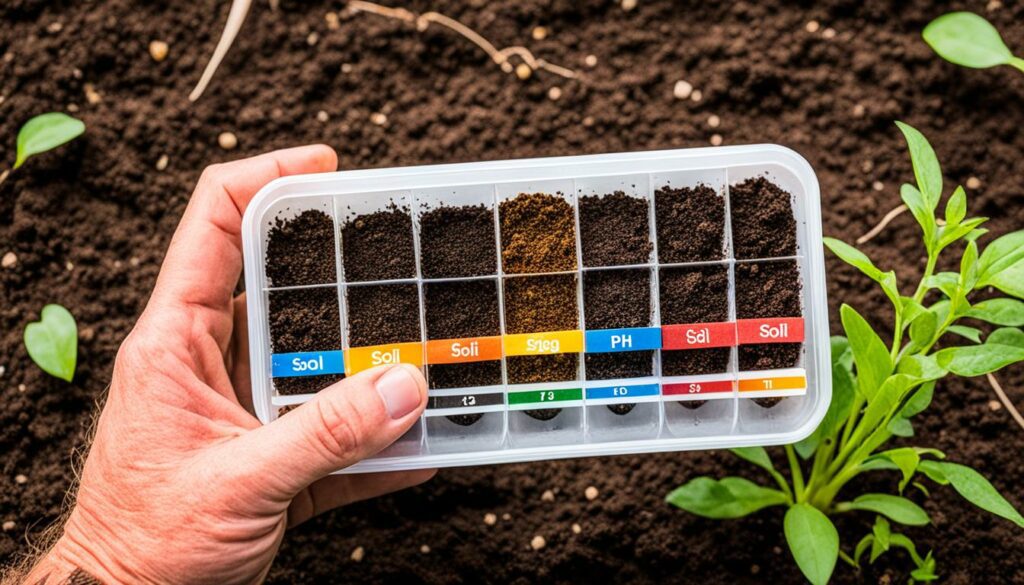
Getting to know your soil starts with taking samples right. Experts say to take samples a few hours after adding fertilizer. Or do it the same day. This gives a clear picture of the nutrients in the soil.
Always take samples from a variety of plants to see what’s normal and what’s not. It’s also wise to keep an eye on pH and EC of the water you use. This helps use the right amount of nutrients and keeps the soil balanced well.
After testing the soil, knowing how to use the results is crucial. Collecting samples the right way is very important. It means they truly show what the plants need.
Keeping track of each sample helps with accurate analysis. Checking for things like CO2 levels or how stable the soil is tells a lot about its health. This info is vital for better soil care. It helps with trapping carbon, managing nutrients, and keeping agriculture sustainable.
Crop rotation, along with cover cropping, is key in improving soil. It helps farmers boost soil health for long-term agricultural success. This strategy makes farming sustainable.
Good crop rotation means planting different crops on the same land over the years. This breaks pest and disease cycles. It also enriches the soil by changing root systems and adding various organic materials. Crop rotation boosts plant diversity and soil nutrient use.
Cover cropping has become more popular recently, with 15.4 million acres covered in 2017. This was a 50% jump in just five years. Eight states showed more than double the cover crop area during this time. The number of farms using cover crops also rose by 15.2%. Such growth highlights the advantages. For example, it increased corn and soybean yields by 3% and 4.9%, respectively, after five years.
In 2012, a drought year, the benefits were even higher. There were yield increases of 9.6% on corn and 11.6% on soybeans. Legume cover crops can fill the soil with nitrogen by 50-150 pounds per acre. This cuts the need for chemical fertilisers. Other cover crops take in 30-50 pounds of nitrogen per acre. This protects waterways from too many nutrients.
Using different cover crops together creates more biomass and nitrogen for the soil. Plants like rye, clovers, and vetches boost soil health by adding organic matter. They stop soil from washing away and improve how water and air move in the soil. With these methods, farms not only better their soil but also help wildlife and make more money.
| Cover Crop Benefits | Statistics |
|---|---|
| Increase in Acreage (2012-2017) | 50% overall increase, doubling in 8 states |
| Farm Adoption Rate Increase | 15.2% |
| Yield Increase (after 5 years) | 3% in corn, 4.9% in soybeans |
| Yield Increase (drought year 2012) | 9.6% in corn, 11.6% in soybeans |
| Nitrogen Fixation by Legumes | 50-150 pounds per acre |
| Nitrogen Scavenging by Non-legumes | 30-50 pounds per acre (up to 150 in nutrient-rich fields) |
Mastering efficient irrigation is vital for soil health. These methods save water and help plants grow strong. It’s key to consider each plant type’s water needs throughout the year.
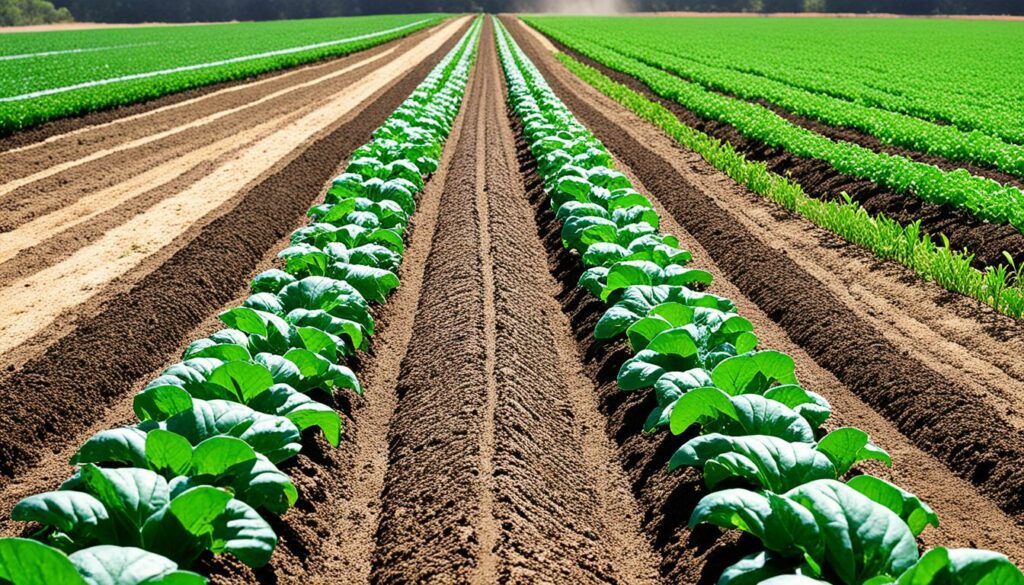
Adapt your watering to what your land really needs. Using systems that check soil moisture lets plants get water only when they really need it. This saves water and helps plants grow well. Sensors that track the weather and soil conditions allow you to make real-time changes to your watering schedule.
Too much or too little water can harm plants and the soil. Overwatering can wash away soil and nutrients, or even damage roads and buildings. But, too little water stresses plants, making them weak. Managing water well is key.
Experts advise checking your irrigation system every year. A check-up can show how well your system works and what fixes it might need. Also, setting a water budget helps you use just enough water without hurting your landscape.
Proper training for setting up and looking after these systems is crucial. Organisations like the USDA recommend that workers know how to use water wisely. Good training means we get irrigation systems that help soil stay healthy for the long term.
By using reliable irrigation methods, we keep our gardens and farms looking great. We also protect the environment by using water wisely.
Organic farming relies on adding organic matter to improve soil health and fertility. Techniques like composting and using manure are key. They help keep your farm productive. I’ll explain why these methods are so important.
Composting turns farm waste into rich, soil-improving material. It decreases waste and makes the soil better. A.F. Gustafson, in 1941, said keeping soil high in organic matter is hard but needed for the best crops. Compost boosts the soil’s ability to hold water and makes it stronger against erosion.
To do composting right, remember the following tips:
Adding manure is another important step in organic farming. It gives the soil nutrients like nitrogen and phosphorus, improving its health. For example, every 1% of organic matter in the top 6 inches of soil can hold up to 1,000 pounds of nitrogen for plants.
To use manure well, make sure to do the following:
Composting and using manure both help improve the soil. They make it more fertile, keep it from eroding, and help with water. They’re essential for a successful, sustainable farm.
Minimising soil disturbance is key to good soil conservation in sustainable farming. Disturbances from biological, chemical, and physical actions harm soil. By reducing these problems, we help in conserving the soil and aid in farming sustainably.
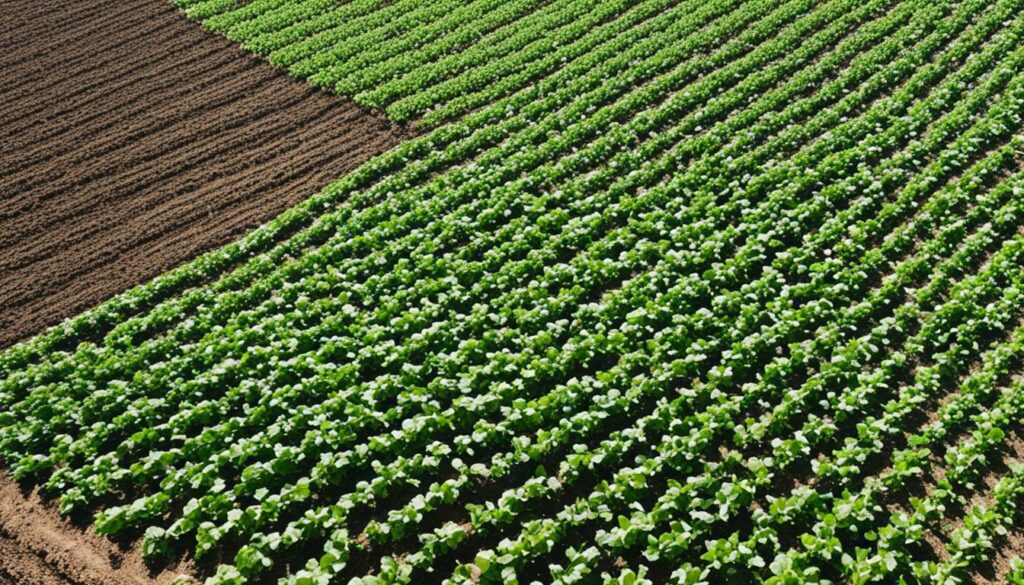
Overgrazing can turn areas into deserts and harm productivity. It’s crucial to manage how much livestock graze an area. Chemical disturbances come from using too many chemical inputs. They disrupt the soil’s natural processes. Physical disturbances come from tilling and lead to compacted soil and fertility loss.
Reducing soil disturbance helps water and air enter the soil easily. This reduces ponding, preserves soil organic matter, cuts down on erosion and crusting, and helps with climate change.
Farming with a mix of crops and cover crops lowers chemical disturbances. Practices like gentle manure spreading and avoiding working on wet soil can also make a big difference. Adding windbreaks, cover crops, and barrier strips helps prevent erosion.
| Practices | Benefits |
|---|---|
| Low-disturbance manure application | Reduces physical disturbance, enhancing water and air infiltration |
| Diverse cropping systems and cover crops | Minimises chemical disturbances, enhances biodiversity |
| Managing livestock | Prevents overgrazing, mitigating biological disturbance |
| Windbreaks and barrier strips | Reduces erosion from natural forces |
Using ways to keep soil undisturbed has many upsides. Sustainable farming that follows these methods uses less artificial fertilisers. It also improves soil quality and saves money on fuel and work. Knowing how much to graze, how to plough, and what crops to grow is very important in making these methods work well.
It’s key to keep the soil covered to protect it and help the farming environment stay healthy. Using cover crops and mulching is important all year to keep soil fertility high.
All year, we should have something covering the soil like plants or mulch. This keeps the soil in good shape. Cover crops and no-till methods stop soil from washing away. They also help keep the soil just the right amount of wet and cool. This is good for plants.
Cover crops also collect nutrients from the soil. This means we can use these nutrients again for the next plants we grow. It’s like recycling nutrients to help new plants grow strong.
Keeping the soil covered all year helps more than just the dirt. It makes the land a home for many tiny creatures like bacteria, fungi, and earthworms. These small friends make the soil better for plants by improving its structure. Plants grow better when the soil is not only healthy but also holding enough water for them.
Mulching is another way to protect the soil, using things like straw or wood chips. These materials stop the soil from wearing away and keep it from drying out too much. They also help new soil form by breaking down over time.
Living mulches, plants that stay green all year, stop weeds from growing tall. They keep the soil at a good temperature no matter the season. Letting animals eat these plants is also a good idea. It helps the soil, it keeps the plants in check, and it makes money for the farmers.
Cover crops and mulching work together to keep the soil healthy and make sure plants can be their best.
| Benefits of Year-Round Soil Cover | Cover Crops | Mulching |
|---|---|---|
| Soil Erosion Reduction | Significantly Reduced | Moderately Reduced |
| Soil Moisture Retention | Enhanced | Enhanced |
| Nutrient Management | Optimised | Indirectly Supported |
| Soil Organisms and Biodiversity | Greatly Increased | Moderately Increased |
Boosting soil biodiversity is key for good farming. You can do this by growing many types of plants and involving animals. This way, the land becomes stronger and nature can fight back better.
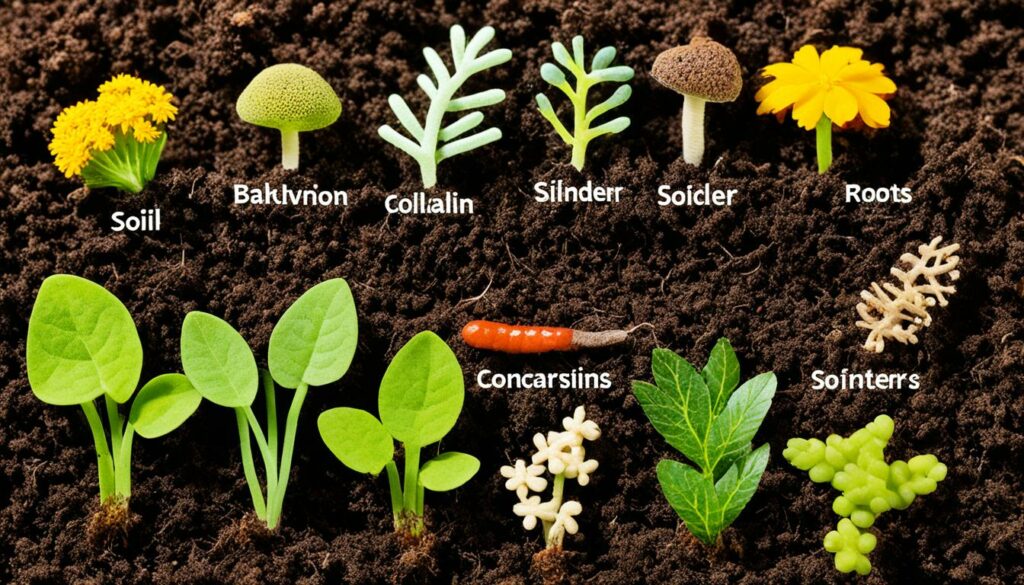
Adding animals to the farm helps the soil in many ways. They eat and then spread nutrients back into the ground. Animals also help by churning the soil and keeping it alive.
Letting animals move around different fields makes soil life rich and diverse. This happens as more plants grow, feeding various bugs and microbes in the soil. Changing where animals graze helps plants stay healthy and the soil alive.
Switching up the crops and planting in different ways is very beneficial for the soil. It makes the land more fertile and helps save money. This method also stops pests and diseases from harming the plants.
By planting various crops and keeping the soil covered, you do many good things. You save water, keep the soil cool, stop weeds, and make homes for soil creatures. This natural way of farming is both healthier and more profitable.
A small bit of soil holds a huge variety of life, like millions of tiny organisms. This shows us how important rich soil is for farming. It’s worth a lot of money too, more than 1.5 trillion dollars. Protecting the soil with smart farming practices is crucial for our future.
It’s vital to have living roots always in the soil. This keeps the soil fertile and healthy. It makes the ground sturdier, helps fight erosion, and boosts the use of nutrients and good bacteria. To keep roots alive, farmers can cut back on resting times for fields. They can also plant permanent crops.
Not letting the soil sit empty is important. This way, the land is always working, which is good for its health. Using crop rotations and plants that cover the ground helps a lot. These strategies keep the soil busy and full of life.
Plants that live year after year are very helpful. They don’t need to be replanted often. These crops keep the soil from being disturbed. They make the ground stronger by growing deep roots. This is great for making nutrients more available, forming soil clumps, and making the soil more fertile.
Growing plants that last a long time and using methods that keep the soil alive bring many good things. This includes better use of nutrients, stronger plants, more money for the farmer, and looking after the planet. Let’s compare how growing crops every year compared to once in a while affects the soil:
| Aspect | Annual Crops | Perennial Crops |
|---|---|---|
| Soil Stability | Needs a lot of digging, which can wash soil away | Keeps the soil in place with strong roots |
| Soil Fertility | Might use up all the nutrients | Keeps feeding the soil so it’s always full of life |
| Water Infiltration | Can stop rain from soaking through | Helps water sink in and not run off |
| Organic Matter | Only gets better when things are added | Makes the soil richer all the time |
| Microbial Activity | Changes when things are planted differently | Always high with roots that never die off |
Organic farming avoids synthetic inputs and improves soil health naturally. It preserves and reinvests in ecosystems, helping agriculture to be sustainable. This method increases the amount of organic matter in the soil to 8.33%, more than in conventional farming. The main benefits include preserving ecosystems and making the soil richer.
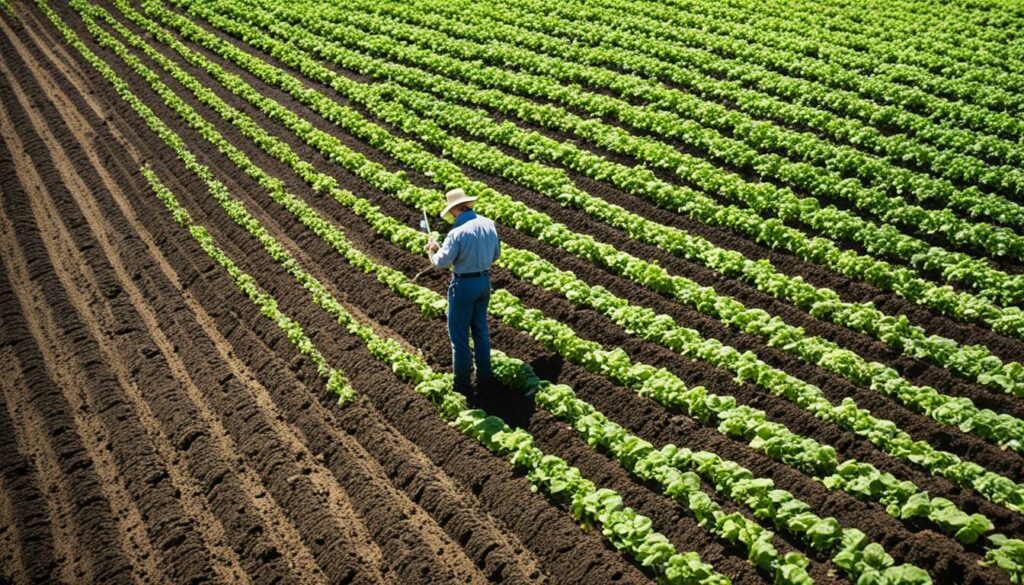
No-till and strip-tilled organic plots produce less nitrous oxide. This is good for the environment as it cuts down on a harmful greenhouse gas. This method not only helps the soil but also fights climate change.
Organic farming helps plants grow better by encouraging fine roots and nitrogen-fixing nodules. It also boosts the number of good bacteria and other helpful organisms in the soil. These benefits are not as common in conventional farming.
Organic farming relies on Arbuscular mycorrhizal fungi (AMF), which naturally help plants. Organic soil has more AMF already, so crops need less extra help. This means that using AMF from organic soil can enhance plant growth.
Here’s a table summarising some key findings regarding organic and conventionally managed soils:
| Parameter | Organic Farming | Conventional Farming |
|---|---|---|
| Organic Matter Content | 8.33% | 7.37% |
| Sequestered Soil Organic Matter | 57.3% | 45% |
| AMF Colonisation Increase | 30% | N/A |
Organic farming is a key player in the fight against climate change. It increases soil organic matter and locks away carbon. This is great for the environment. Plus, organic systems support a rich variety of soil life.
To get the best harvest, organic farmers use smart methods. For example, they might add vetch or spray bean plants with special mixes. These steps show how effective and clever organic farming can be in growing healthy crops.
Keeping soil healthy is key for farm lands to last long. The USDA says we should carefully use plant nutrients on fields to boost crops without hurting the environment. This means we need to use smart plans.
To use fertilisers well, we must know what crops and soils need. We follow the “Four Rs” to get it right: the right amount, source, placement, and time. This way, we feed plants best while keeping the environment safe. Testing soil regularly tells us what nutrients are missing, helping us choose fertilisers more accurately.
In sustainable farming, using natural fertilisers instead of chemicals is very important. Materials like compost, manure, and cover crops can make the soil richer and better. They give plants what they need and improve the soil for tiny creatures living near roots.
Covering soil with plants helps to keep it moist, cool, and stops weeds. This also keeps the homes of soil animals safe. Adding organic stuff to the soil keeps it fertile naturally, making farming last longer and use less chemical sprays.
Perennial agriculture systems help improve the soil in a great way. By using crops that come back every year, farming can give more back to nature. This method boosts soil health and farm productivity. Let’s look more into the pluses and minuses of these systems.

These systems keep roots living in the soil all the time. This makes the ground stronger and stops it from washing away. Farmers don’t have to spend as much on fixing the soil and can save money. Less runoff means the soil keeps more of its good stuff, like nutrients.
Many different plants grow in these systems. Having lots of different plants can mean you don’t need as many chemicals to keep them healthy. This is good for the land and your wallet. Adding animals to the mix can also help the soil get healthier. They keep the soil alive and can help grow more plants we don’t need to replant each year.
But, setting up and keeping these farms going is not easy. It takes lots of time, money, and knowledge. However, places like the Minnesota Office for Soil Health are working hard to help. They are collecting data to make it easier for farmers to know what to do.
The USDA is also working on making things better. It has projects that aim to help farmers grow more of the grains that come back every year, like KernzaⓇ. These efforts make developing perennial systems easier for farmers. They help with money and know-how to make these farms a success.
Plant diversity can lead to lower pesticide and herbicide use while providing greater economic stability by diversifying crop markets.
| Aspect | Perennial Systems | Annual Crops |
|---|---|---|
| Roots | Continuous living roots | Seasonal roots |
| Soil Disturbance | Minimized | High due to tilling and plowing |
| Pesticide Use | Low | High |
| Economic Stability | High diversification | Market-dependent |
The government helps a lot in making sure farmers work in ways that are good for the earth. They offer plans and rewards. These help farmers make soil stronger and keep our planet healthy.
In California, the Healthy Soils Program started in 2016. It’s a big part of the Healthy Soils Initiative. Thanks to money from cap and trade, it got $7.5 million in 2017 and $10 million in 2018. For 194 projects in 2018, it asked for nearly $8.7 million in grants.
And then there’s the Farm Bill, specifically Title II. It supports special soil projects with big money. For example, the EQIP got $8.45 billion more because the government sees how important healthy soil is.
Laws also encourage farmers to take care of the soil. States like California and Maryland have passed laws to help farmers use better agri practices. The 118th Congress has new acts, such as the Agriculture Innovation Act of 2023, to focus on soil health.
Outside the USA, Australia has its own efforts. They have programs and chances for farmers to help with carbon markets. All these actions, laws, and funding show the global push to make farming better for the earth and all of us.
Looking after soil for the long term is key to sustainable farming. I’ll give you some practical farming tips to keep your soil healthy. They’ll help you now and in the future.
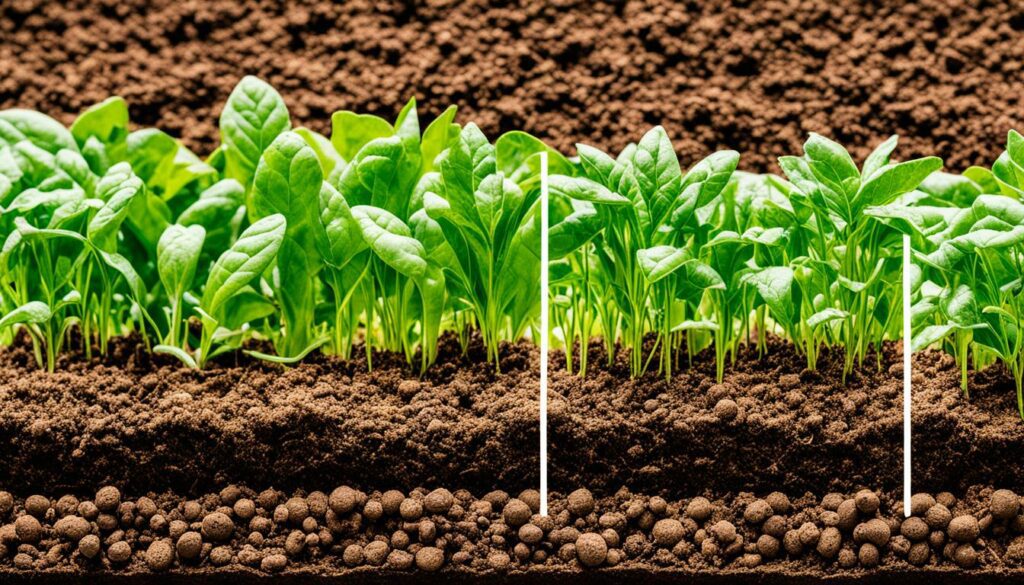
Start with regular soil tests. These check things like pH and nutrient levels. Knowing this helps make smart choices about what your soil needs. Remember, every 1% increase in organic matter gives you nitrogen, phosphorus, and sulfur.
Use crop rotation to keep your soil in top shape. Changing crops every season can stop pests and keep nutrients balanced. Legume cover crops, for example, add nitrogen to the soil and make it richer.
Adding organic matter like compost or manure does wonders. It boosts soil health and helps good microbes grow. Healthy soil stores more carbon and is better for fighting climate change. Cover crops, like their roots, make the soil stronger and hold onto nutrients.
Growing plants that last a long time and using less intense soil work, like no-till farming, is good. It keeps soil from washing away and keeps the top layer healthy. Different types of soil life: earthworms, bacteria, and fungi, like soil at different pH levels. This can help plan how you work the soil.
Here’s a quick look at some important soil care factors:
| Factor | Effect | Recommendation |
|---|---|---|
| Soil pH | Affects nutrient availability | Maintain pH between 6 and 7 |
| Organic Matter | Improves nutrient cycling | Increase content through composting |
| Tillage | Impacts soil structure | Practise reduced tillage |
| Cover Crops | Reduce erosion, enhance nutrients | Utilise diverse cover crops |
Don’t use too much fertiliser; it can cause problems and waste. Rotating your crops keeps everything balanced and the farm sustainable.
Follow the USDA-NRCS principles of taking care of the soil. They are: Minimise soil disturbance, Keep soil covered, Maximise plant diversity, and Maximise the period of living root growth. They provide a good foundation for soil health.
Looking after the soil in a complete way is key to farming that lasts. By using a mix of methods, our lands can stay fertile and productive. It’s vital to focus on soil organic matter. For every 1% more organic matter in the top 6 inches, there’s about 1,000 pounds of nitrogen. This helps 230 pounds of phosphorus and 165 pounds of sulfur per acre. Such nutrients are vital for farming sustainably.
Cover crops, like legumes, work well, especially in low-nutrient soils. They increase the amount of nitrogen in the soil. Also, adjusting the soil’s pH for specific crops boosts their growth. For example, it can help nitrogen-fixers like legumes growing well in nearly neutral soil. Or, it can help make soil a bit acidic for blueberries. This ensures crops get the nutrients they need and encourages good bugs that eat pests.
Government projects, such as ‘Caring for our Country’ and Victoria’s Healthy Soils, are big helps in managing soil health. They connect with farmers, provide good training, and encourage long-term improvements. These improvements, like better traffic control over fields, can help in many ways. They tackle issues like high costs, changing weather, and fitting into global plans to reduce pollution. Smart choices about soil health secure a bright, sustainable future for farming.
Managing soil health is crucial for better plant growth and farm productivity. It helps prevent erosion, and keeps the land strong for longer. This is key for sustainable farming.
Soil testing should happen every 1-3 years. It gives you important details about the soil. This helps in deciding how to add nutrients and keep the soil healthy.
Crop rotation and cover crops keep the soil healthy. They cut down on pests and diseases. Legumes are good cover crops because they add nutrients to the soil.
Precision irrigation helps save water and feed the plants well. It stops water from washing away important soil nutrients. It also stops plants from becoming stressed due to lack of water.
Adding compost or manure improves soil a lot. It makes the soil hold water better and supports more life in the soil. This is good for coping with drought and keeping the soil healthy.
Not disturbing the soil too much is important. Techniques like conservation tillage keep the soil and its nutrients safe. This way, the soil stays healthy and can continue to grow good crops.
Keeping the soil covered with crops, mulch, or residues is key. This stops the soil from eroding and losing water. Cover crops and mulch also make the soil healthier by keeping it active.
More types of plants and animals make the soil healthier. They balance the nutrients, control pests, and help with pollination. This creates a farming system that takes care of itself.
Leaving roots in the ground all year makes the soil better. It stops the soil from washing away and helps tiny life that keeps the soil healthy. This is good for the land and the crops.
Organic farming keeps the soil healthy without using chemicals. It uses compost, controls pests with natural enemies, and supports many types of life on the farm.
Using fertilisers wisely, and choosing natural options, keeps the soil and the environment safe. By carefully putting these nutrients on the land, the soil stays rich and healthy.
Perennial systems are good for the soil. They protect it from erosion and keep nutrients. Yet, they need attention to set up and keep. Care and support can make them work well.
Government support and laws can encourage better farming. They help farmers protect their land and fight climate change. This makes the soil stronger and good for growing food.
For long-term soil health, it’s good to check the soil often and use many kinds of plants. Adding natural matter, growing plants that live for years, and keeping the soil safe is also important. This helps the soil and the farm stay good for a long time.